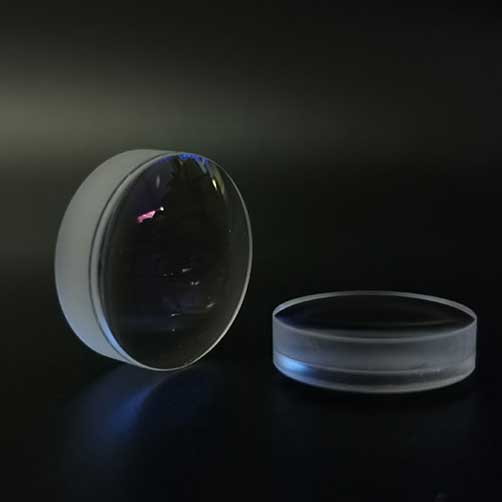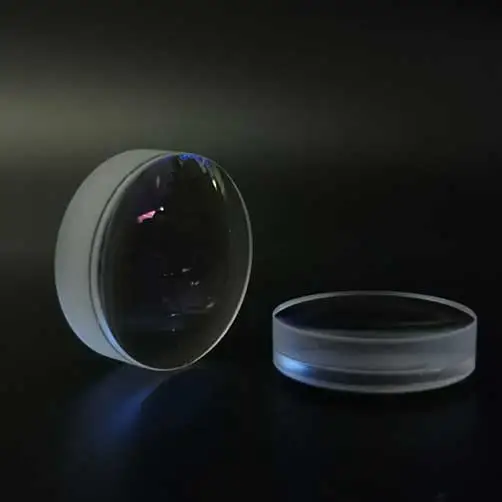
With the continuous development of science and technology, the optical industry is also booming, and optical lenses are used more and more widely. Today, let's learn the specific content and working principle of the most common achromatic lens.
An achromatic lens is a lens formed by cementing two optical components, a positive low refractive index and a negative high refractive index.
Compared to single-piece glass lenses, the cemented design of the double-piece lens provides the user with additional design freedom and further optimizes lens performance, so compared with the monolithic lens with equal diameter and focal length, achromatic lens has more obvious advantages.
Achromatic lens is made of concave and convex lenses made of two glasses with different optical properties. It is often used for convex lenses made of glass with small refractive index and large dispersion power, and concave lenses made of glass with large refractive index and small dispersion power.
Achromatic lenses generally can only superimpose the images and points of the two main colors of light that are considered to be the main ones, thereby eliminating the chromatic aberration of the two colors of light.
Chromatic aberration is caused by the difference in the dispersion and refractive index of light of different wavelengths in the glass, resulting in different focal points of light of different wavelengths, using the combination of different materials.
Achromatic lens has in various types of configurations, the common ones being positive achromats, negative achromats, triplet achromats, and aspheric achromats.
Note that an achromatic lens can be a doublet lens(two elements) or triplet (three elements), and the number of elements is independent of the number of rays corrected by the lens.
In other words, an achromatic lens in a doublet or triplet configuration can correct both red and blue light in the visible range.
Because achromatic lenses focus the colors at the same point, they allow the user to fully focus the image. Compared with uncorrected singlet lens, achromatic lens can produce clearer image, which is easier to observe and obtain more accurate perception.
Achromatic lenses revolutionized imaging when they were first introduced, and while the quality of lenses has continued to improve, achromatic lenses remain a staple in both scientific and non-scientific optical applications.
Improved image quality: Achromatic lenses eliminate color banding, greatly improving image brightness and clarity, a fact that is especially true for polychromatic imaging.
Efficient light transmission: Unlike singlet lenses, the on-axis performance of achromatic lenses does not degrade with aperture size, allowing you to utilize the entire transparent aperture.
Cost-effective production: Although achromatic lenses can be improved, these lenses are much more expensive, and for most purposes, achromatic lenses provide a lot of correction, making them the most cost-effective way to obtain clear white light images.
To produce the desired color correction, achromatic lens manufacturers must use two or more types of optical glass, which have different amounts of wave dispersion.
Typically, the process involves concave lens elements with high dispersion and convex lens elements with low dispersion. The two lenses are mounted so that the deformation of one lens closely cancels the deformation of the other lens.
This type of achromatic lens is called an achromatic doublet lens and is the most common type of achromatic lens, although triplets also exist.



